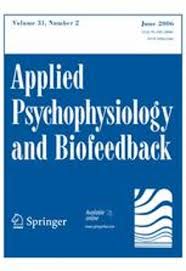Heart Coherence Training Combined with Back School in Patients with Chronic Non-specific Low Back Pain
Categories
Keywords
Categories
Keywords
- Show all
- ADHD
- Anxiety/Panic
- Burnout
- Cancer
- Cardiovascular disease
- Chronic pain
- Cognitive function
- Cortisol/DHEA
- Costs
- Dementia
- Depressie
- Diabetes
- Global Coherence
- Hypertension
- Intuition & Consiousness
- Kids/Youth
- Leadership
- Meditation/Mindfulness
- Metabolic Syndrome
- Obesity/Eating disorder
- Pregnancy
- PTSD
- Resilience
- Schizophrenia
- Science HRV & Coherence
- Sleep quality & fatigue
- Social Coherence
- Stress
Heart Coherence Training Combined with Back School in Patients with Chronic Non-specific Low Back Pain

The aim of this study was to explore on which variables a stress reduction program based on heartcoherence can enhance the effects of a back school (BS) inpatients with chronic non-specific low back pain and to explore possible moderators for treatment success. A ret-rospective explorative design was carried out with 170patients with chronic non-specific low back pain. 89 Patients were admitted to BS and 81 patients were selected for BS and heart coherence training (BS–HCT). Six sessions of heart coherence were provided. At T0 (baseline)and T1 (discharge), the Numeric Rating Scale for pain (NRS pain), Roland Morris Disability Questionnaire (RMDQ), Pain Disability Index (PDI) and Rand-36 were administered in both groups. Both groups improved significantly on NRS pain, RMDQ, PDI and most of the Rand-36 subscales. On physical functioning, the BS–HCT group improved significantly more than the BS group (p=0.02) but not after Bonferroni correction. Significant moderate correlations (r=0.39 and r=0.48) were found between the change of heart coherence and change of PDI and RMDQ respectively, but not with other variables. Baseline characteristics were not related to change on heart coher-ence. Providing HCT was more effective on physical functioning compared to a BS program. Change in heartcoherence was related significantly to 2 out of 12 analyses. Placebo controlled and blinded studies are needed to confirm this. Characteristics of individuals who might benefit remain unknown. Evidence of this study is considered a level C, because of its pragmatic clinical character.
Download the complete article, click here